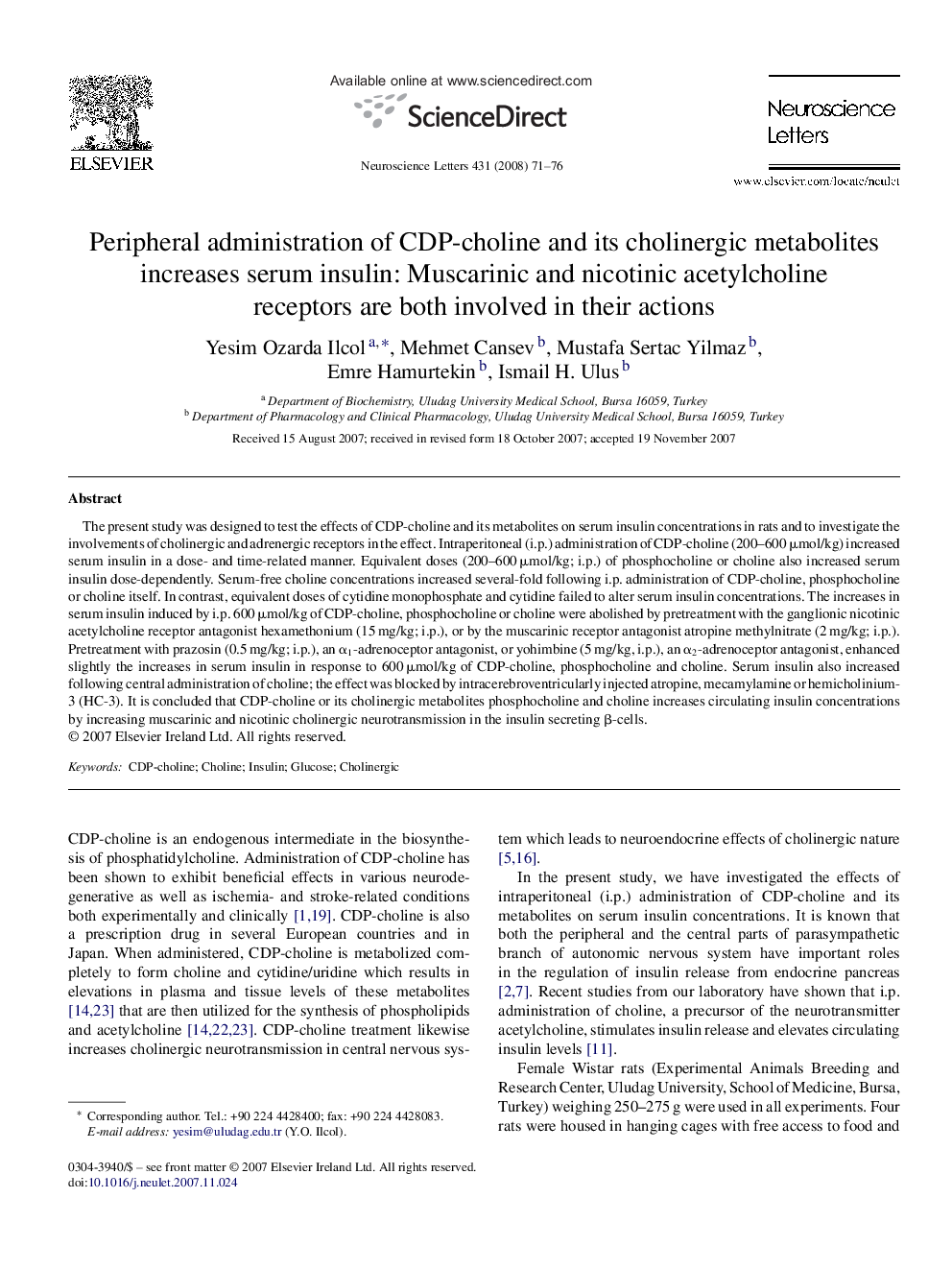| Article ID | Journal | Published Year | Pages | File Type |
|---|---|---|---|---|
| 4348872 | Neuroscience Letters | 2008 | 6 Pages |
Abstract
The present study was designed to test the effects of CDP-choline and its metabolites on serum insulin concentrations in rats and to investigate the involvements of cholinergic and adrenergic receptors in the effect. Intraperitoneal (i.p.) administration of CDP-choline (200-600 μmol/kg) increased serum insulin in a dose- and time-related manner. Equivalent doses (200-600 μmol/kg; i.p.) of phosphocholine or choline also increased serum insulin dose-dependently. Serum-free choline concentrations increased several-fold following i.p. administration of CDP-choline, phosphocholine or choline itself. In contrast, equivalent doses of cytidine monophosphate and cytidine failed to alter serum insulin concentrations. The increases in serum insulin induced by i.p. 600 μmol/kg of CDP-choline, phosphocholine or choline were abolished by pretreatment with the ganglionic nicotinic acetylcholine receptor antagonist hexamethonium (15 mg/kg; i.p.), or by the muscarinic receptor antagonist atropine methylnitrate (2 mg/kg; i.p.). Pretreatment with prazosin (0.5 mg/kg; i.p.), an α1-adrenoceptor antagonist, or yohimbine (5 mg/kg, i.p.), an α2-adrenoceptor antagonist, enhanced slightly the increases in serum insulin in response to 600 μmol/kg of CDP-choline, phosphocholine and choline. Serum insulin also increased following central administration of choline; the effect was blocked by intracerebroventricularly injected atropine, mecamylamine or hemicholinium-3 (HC-3). It is concluded that CDP-choline or its cholinergic metabolites phosphocholine and choline increases circulating insulin concentrations by increasing muscarinic and nicotinic cholinergic neurotransmission in the insulin secreting β-cells.
Related Topics
Life Sciences
Neuroscience
Neuroscience (General)
Authors
Yesim Ozarda Ilcol, Mehmet Cansev, Mustafa Sertac Yilmaz, Emre Hamurtekin, Ismail H. Ulus,
